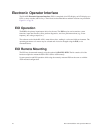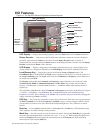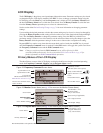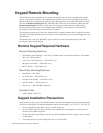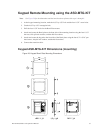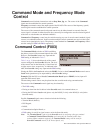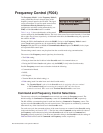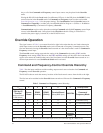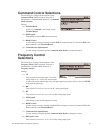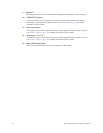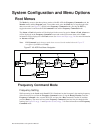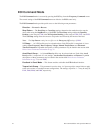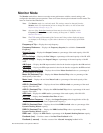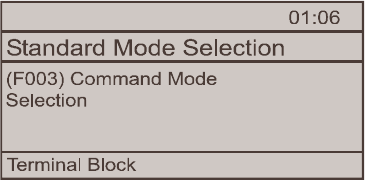
36 H9 ASD Installation and Operation Manual
Command Mode and Frequency Mode
Control
Command control includes instructions such as Stop, Run, Jog, etc. The source of the Command
signal must be established for normal operation.
Frequency commands control the output speed of the H9 ASD. The source of the frequency (speed)
control signal must be established for normal operation.
The source of the command control and speed control may be either internal or external. Once the
source signal is selected for either function, the system may be configured to use the selected signal all
of the time or switch under user-defined conditions.
Command and Frequency control may be carried out using any one of several control methods (signal
sources) or combinations thereof. In the event that multiple control commands are received, the signal
sources are assigned priority levels. The primary control method for Command and Frequency control
uses the settings of
F003 and F004, respectively.
Command Control (F003)
The Command Mode selection of F003 establishes
the primary source of the command input for the ASD.
However, the Override feature may supersede the
F003 setting as indicated in Table 3.
Table 3 on pg. 38 shows the hierarchy of the control
sources managed by the Override function. The level
of the control item on the hierarchy is listed from left
to right, most to least, respectively. As indicated in the
table, the Override setting may supersede the
F003 setting.
Placing the EOI in the Local mode selects the RS485 (2-wire) as the Command Mode control source.
Local mode operation may be superseded by other Override settings.
Example: With the EOI set to Local, Communication Board input or RS485 (4-wire) input will
supersede EOI control input.
The remaining control sources may be placed into the override mode using communications.
The source of the Command control signal may be selected by:
•The F003 setting,
• Placing an item from the list below in the Override mode via communications, or
• Placing the EOI in the Local mode (places only the RS485 [2-wire] or the RS485 [4-wire] in the
Override mode).
Possible Command signal source selections include the following:
• Terminal Block (default),
• EOI Keypad,
• RS485,
• Communication Option Board, or
• F003 setting (is used if no signal sources are in the Override mode).
Note: The Terminal Board is placed in the Override mode by assigning a discrete terminal
to Command Terminal Board Priority and connecting the terminal to CC. Once
activated (Run command required), the Terminal Board settings will be used for
Override Command control (F, R, Preset Speeds, etc.).



